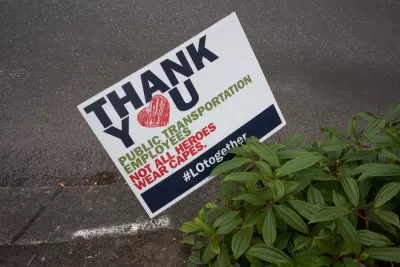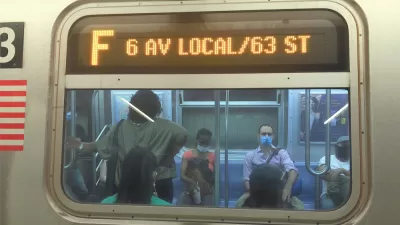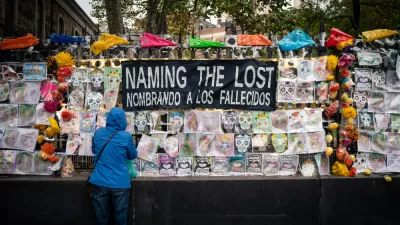Labor unions are raising alarms about the difficulties of keeping transit workers—the essential workers upon which so many essential workers rely—safe during the pandemic.

Marcia Brown reports on an underreported tragedy amongst the many tragedies of the COVID-19 pandemic:
Hundreds of these transit workers have died as a result of their exposure to the virus while at work. Nearly 100 members of Transit Workers Union Local 100 in New York City alone have died. Every time there’s a hot spot around the country, labor leaders told me, transit workers in that region contract COVID-19 and some die.
More data from around the country add to the misery:
As of [September 4], at least 87 ATU members have died. TWU has lost at least 150 members, and no fewer than 10,000 members have tested positive or been in quarantine. But for the most part, states and agencies aren’t tracking COVID deaths of transit workers. According to ATU Local 192 president Yvonne Williams in Oakland, California, AC Transit officials claim that workers for bus system serving parts of Alameda and Contra Costa counties, contracted the disease outside the workplace. As of September 3, 37 of her members have contracted the disease and two have died.
All of this death has occurred while ridership has declined catastrophically in most cities and regions, and transit agencies continue to raise alarms about fiscal solvency as Congress has come up short on a second round of economic relief for the country. The funding shortfalls have made it difficult for transit agencies to invest in the public health and safety measures necessary to keep transit workers safe during the pandemic, according to the article. Labor unions are left to fill some of the void, but struggling to effectively balance so many risks to transit workers, according to Brown.
FULL STORY: Six Months Into the Pandemic, Transit Workers Are Still Dying—With No End in Sight

Alabama: Trump Terminates Settlements for Black Communities Harmed By Raw Sewage
Trump deemed the landmark civil rights agreement “illegal DEI and environmental justice policy.”

Planetizen Federal Action Tracker
A weekly monitor of how Trump’s orders and actions are impacting planners and planning in America.

The 120 Year Old Tiny Home Villages That Sheltered San Francisco’s Earthquake Refugees
More than a century ago, San Francisco mobilized to house thousands of residents displaced by the 1906 earthquake. Could their strategy offer a model for the present?

In Both Crashes and Crime, Public Transportation is Far Safer than Driving
Contrary to popular assumptions, public transportation has far lower crash and crime rates than automobile travel. For safer communities, improve and encourage transit travel.

Report: Zoning Reforms Should Complement Nashville’s Ambitious Transit Plan
Without reform, restrictive zoning codes will limit the impact of the city’s planned transit expansion and could exclude some of the residents who depend on transit the most.

Judge Orders Release of Frozen IRA, IIJA Funding
The decision is a victory for environmental groups who charged that freezing funds for critical infrastructure and disaster response programs caused “real and irreparable harm” to communities.
Urban Design for Planners 1: Software Tools
This six-course series explores essential urban design concepts using open source software and equips planners with the tools they need to participate fully in the urban design process.
Planning for Universal Design
Learn the tools for implementing Universal Design in planning regulations.
Clanton & Associates, Inc.
Jessamine County Fiscal Court
Institute for Housing and Urban Development Studies (IHS)
City of Grandview
Harvard GSD Executive Education
Toledo-Lucas County Plan Commissions
Salt Lake City
NYU Wagner Graduate School of Public Service





























